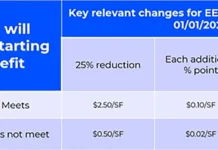by Brian Kelly and Gary Sandford, SMP Consulting Group
Do you cringe each time you open an invoice, especially insurance premium notices? State-regulated workers compensation premiums can be confusing and complex. Employee Classification Codes and Rate Modification designations often are hard to understand and the wrong code can cost a company a lot of money.
Here is an example: A plastic injection molder with 200 employees may have many different classification codes. In New York, for example, an employee in manufacturing may be classified as 4452 (plastic sheets, rods or tubes), 4475 (compression or injection) or 4476 (assembly). Why does it matter? Because the workers comp loss rate for each classification code varies. In the example: $7.45 (4452), $7.21 (4475) and $6.05 (4476) per $100 of payroll. A sales person or clerical support person should have codes 8742 ($0.43) and 8810 ($0.20), respectively. If the employee is misclassified, the rate differential is significant and results in overpayment.
The National Council on Compensation Insurance (www.ncci.com) or the state’s rating bureau will be the place to find the proper classification. NCCI gathers data, analyzes industry trends and prepares objective insurance rates and loss cost recommendations. It provides the manuals that practitioners and large companies depend on. Additionally, check with the state’s workers compensation rating board for further guidance and risk classification.
To get a general understanding of the classifications, find the pertanent codes on the current policy. Pay attention to the rate change dates. New ratings are generated from the state rating bureaus several times per year.
Once an understanding of the classifications is gained, begin an audit of the policy. A spreadsheet with a list of employees and corresponding codes will be helpful. Remember to look at the multiple sub-classifications. All machine operators are not coded the same. The rates may be significantly different. A machinist on the factory floor full time is different from a machine operator working in an office. Each code assigns a level of risk and higher risk codes are costly.
Now that the worksheet is complete, prepare a letter to the insurance carrier indicating the errors. Most of the time, carriers will make the adjustments resulting in lower premiums. If changes are denied, appeal to the state workers compensation rating bureau.
Workers compensation insurance premiums may be one of the highest cost line items for a company. Focusing on the classifications and experience modification rating may save a company $100,000 in premiums. Compounding savings over a five-year period is significant.
SMP Consulting Group, Bay Shore, NY, is a workers’ compensation auditing firm. For more information, visit www.smpconsultinggroup.com.




